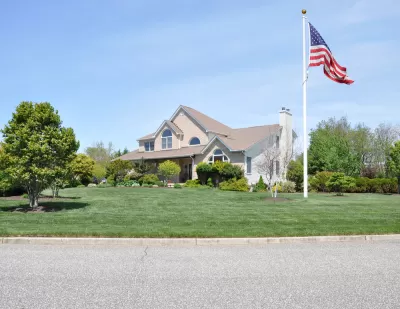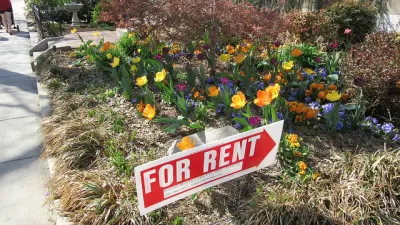The definitions of suburban chosen by researchers tend to fall into three categories—and each has a significant impact and the results of academic inquiry.

Whitney Airgood-Obrycki shares recent research from the Joint Center for Housing Studies of Harvard University that describes the consequences of having so many different definitions for the suburban.
The problem originates with the U.S. Census’s 15-chapter long compendium of geographic terms and concepts, which does not include any definition of “suburb” or “suburban,” according to Airgood-Obrycki. "As a result, in recent years, researchers have created their own methodologies for defining suburban neighborhoods."
"In our new working paper (which will be featured in a lunchtime Research Seminar this Friday, February 22), Shannon Rieger and I explore varying approaches to defining suburbs and investigate whether (and how) different definitions might affect researchers’ findings about the characteristics of America’s suburbs."
There's the census-convenient definition, the suburbanisms definition, and typology definition—each of which produce different results in given metro areas, according to Airgood-Obrycki. The analysis presented later today analyzed 1) whether these different definitions produce substantial differences in key housing and demographic variables, 2) the extent of a given characteristic within suburbs, and 3) the geographic split of a characteristic between city and suburban neighborhoods.
FULL STORY: THE IMPLICATIONS OF DIFFERENT SUBURBAN DEFINITIONS

Maui's Vacation Rental Debate Turns Ugly
Verbal attacks, misinformation campaigns and fistfights plague a high-stakes debate to convert thousands of vacation rentals into long-term housing.

Planetizen Federal Action Tracker
A weekly monitor of how Trump’s orders and actions are impacting planners and planning in America.

San Francisco Suspends Traffic Calming Amidst Record Deaths
Citing “a challenging fiscal landscape,” the city will cease the program on the heels of 42 traffic deaths, including 24 pedestrians.

Adaptive Reuse Will Create Housing in a Suburban Texas Strip Mall
A developer is reimagining a strip mall property as a mixed-use complex with housing and retail.

Study: Anti-Homelessness Laws Don’t Work
Research shows that punitive measures that criminalized unhoused people don’t help reduce homelessness.

In U.S., Urban Gondolas Face Uphill Battle
Cities in Latin America and Europe have embraced aerial transitways — AKA gondolas — as sustainable, convenient urban transport, especially in tricky geographies. American cities have yet to catch up.
Urban Design for Planners 1: Software Tools
This six-course series explores essential urban design concepts using open source software and equips planners with the tools they need to participate fully in the urban design process.
Planning for Universal Design
Learn the tools for implementing Universal Design in planning regulations.
Heyer Gruel & Associates PA
JM Goldson LLC
Custer County Colorado
City of Camden Redevelopment Agency
City of Astoria
Transportation Research & Education Center (TREC) at Portland State University
Jefferson Parish Government
Camden Redevelopment Agency
City of Claremont





























